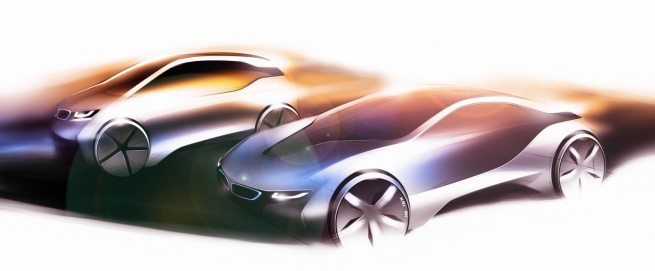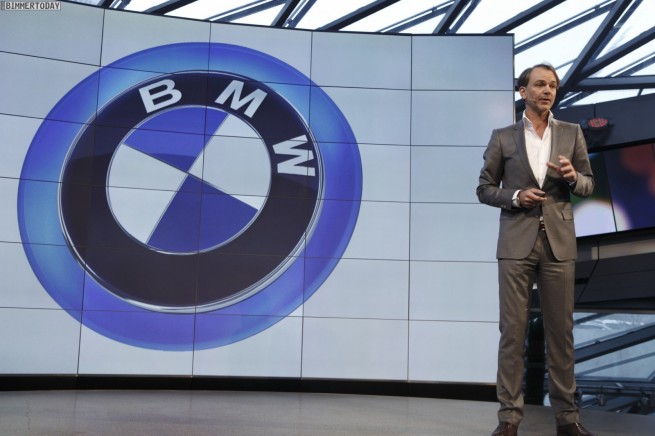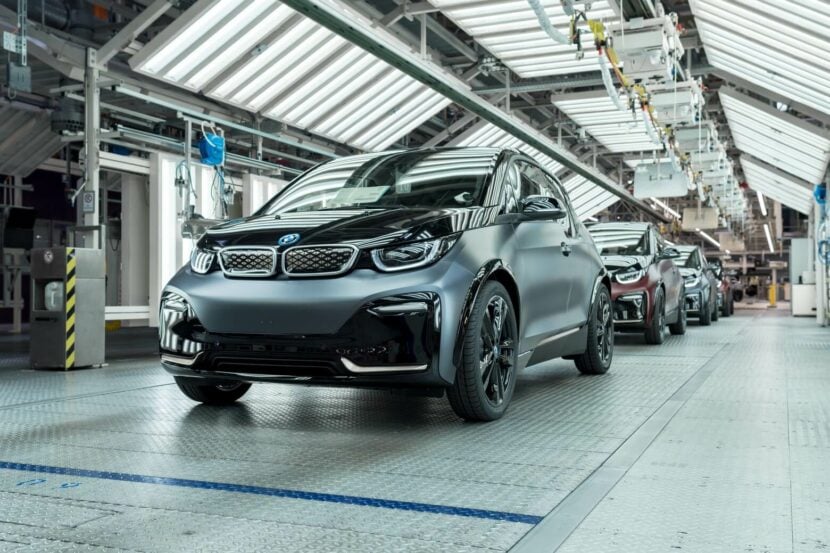Last year, BMW began to openly discuss about their latestand the biggest project the company has initiated in its history: a new sub-brand which will market an entire line-up of electric vehicles. The “next premium” automobile, as BMW called it, was previewed through designer sketches and Adrian Van Hooydonk gave some insight into BMW’s future strategy and electric mobility.
“Of course the car should also show its new skills in the design, including being lightweight and safe, as well as offering the driving fun that you can have with an electric powered car,’ says Van Hooydonk. ‘We want to give our customers a small island of wellbeing – an island of silence – for their mobility. Therefore you will find also a totally new type of interior that gives exactly this feeling to the driver and passengers.’
Today, in a new public unveiling, BMW opened the doors even larger for automotive journalists around to world to have a closer peak at the first upcoming electric vehicles: Mega City (i3 badge) and Vision EfficientDynamics (i8 badge).
Along with several new information, Van Hooydonk revealed new sketches of two visionary vehicles and the new sub-brand’s logo.
First and foremost, some of BMW’s iconic design elements remain integrated in the i3 or i8 vehicle. BMW’s famous kidney grille maintains its shape, but it will add a blue surrounding light that makes it easily recognizable as BMW’s i brand.
At the rear-end, the L-shaped taillights continue the tradition of BMW automobiles.
So what’s new and different with “i” branded vehicles?
The logo gets a makeover. For the sub-brand, the BMW logo is complemented by a blue three-dimensional ring, a interesting approach that maintains the heritage while illustrating electric mobility.
The “streamflow”-C-pillar. As announced previously by Van Hooydonk, some iconic design elements will be phased out while others will take their place and hopefully become an icon in the future. The Hofmeister Kink, an historical BMW design cue, is missing from the “i” design language. The “streamflow”-C-pillar represents converging lines that aligns with the cars’ aerodynamic requirements.
Another element that substantiates this design philosophy is the aerodynamic thrust surface – or “aeroflap” – which is integrated into the rocker panel.
Tires profile. Our first encounter with the soon-ready-for production Vision “Full Runner” revealed the 195 mm wheels which BMW engineers said are sufficient for a supercar of this type. Despite having a narrower grip, the 21 inch wheels offer more surface contact. Unofficially BMW stated that the production car might see a slight increase in tires width. The design sketches released today showcase similar tires.
In the press release below, BMW describes some of the design philosophy behind the new electric vehicles.
Press Release: BMW i stands for visionary vehicles, inspiring design and a new understanding of premium mobility – with a consistent focus on sustainability. This unique character is brought to life through style elements that give the design of BMW i models its very own identity. By reinterpreting well-known design characteristics, the BMW i design language ties in with the BMW parent brand. However, as the BMW i sub-brand reinterprets individual elements in a completely new fashion, vehicles launched under the new i sub-brand are provided with a stand-alone identity. For the sub-brand, the BMW logo is complemented by a blue three-dimensional ring. The reinterpretation of the iconic BMW kidney grille, particularly in combination with the sub-brand’s front view, creates an optical link to the typical face of BMW core brand models. Apart from the assets of BMW design which stands for premium, quality and precision the BMW i design also embodies lightness, purity, safety and aerodynamic efficiency.
The side view reveals one of the most prominent design characteristics: the “streamflow”-C-pillar. These converging lines are a manifestation of the design’s alignment with the models’ aerodynamic requirements. Another element that substantiates this design philosophy is the aerodynamic thrust surface – or “aeroflap” – which is integrated into the rocker panel. Due to their diameter, the low-profile tires highlight the efficiency and dynamics of the BMW i3 and the BMW i8. Both concepts feature rear lights that reflect BMW’s classic L theme. The side surfaces emphasize the aerodynamic aspect once again, also when viewed from the rear. As tearing edges, they reduce the models’ aerodynamic drag and give them sound proportions.
The BMW i3 and the BMW i8 demonstrate the potential range of BMW i design principles when applied to two completely different vehicle concepts. The BMW i3, known previously as the “Megacity Vehicle”, will be the BMW Group’s first all-electric series model for urban environments. The BMW i8, on the other hand, is based on the BMW Vision EfficientDynamics concept study. Fitted with a plug-in hybrid drive, it combines the driving characteristics of a high-performance sports car with the consumption and emission levels of a small car.
The BMW i logo
Conveying an air of transparency and openness, the BMW i logo is the epitome of the sub-brand and its design principles. The logo features a future-oriented design and evokes associations with the BMW parent brand. Its diagonal set-up with an upward orientation imparts a look of dynamics and elegance, thus augmenting the visionary character of BMW i.








































































